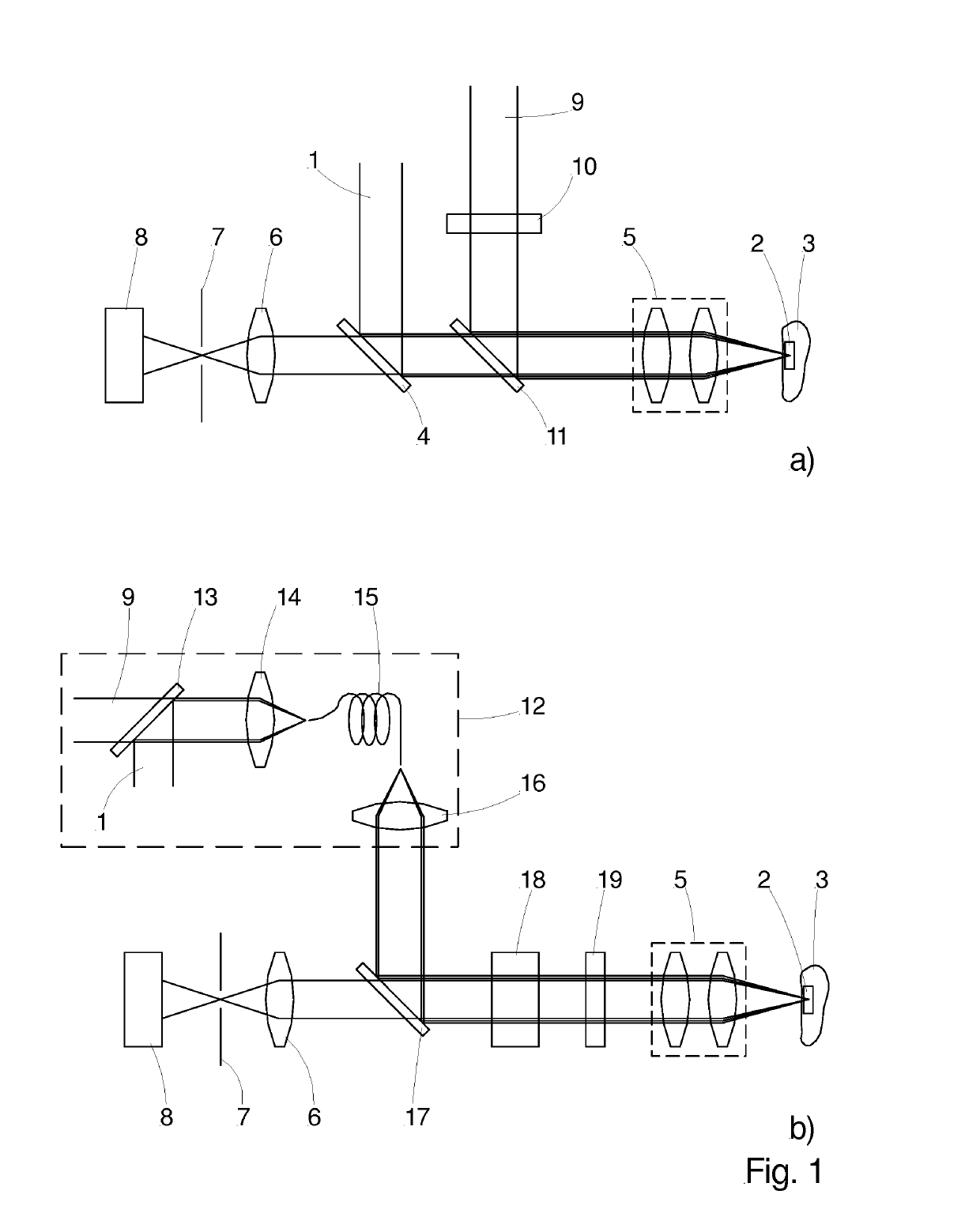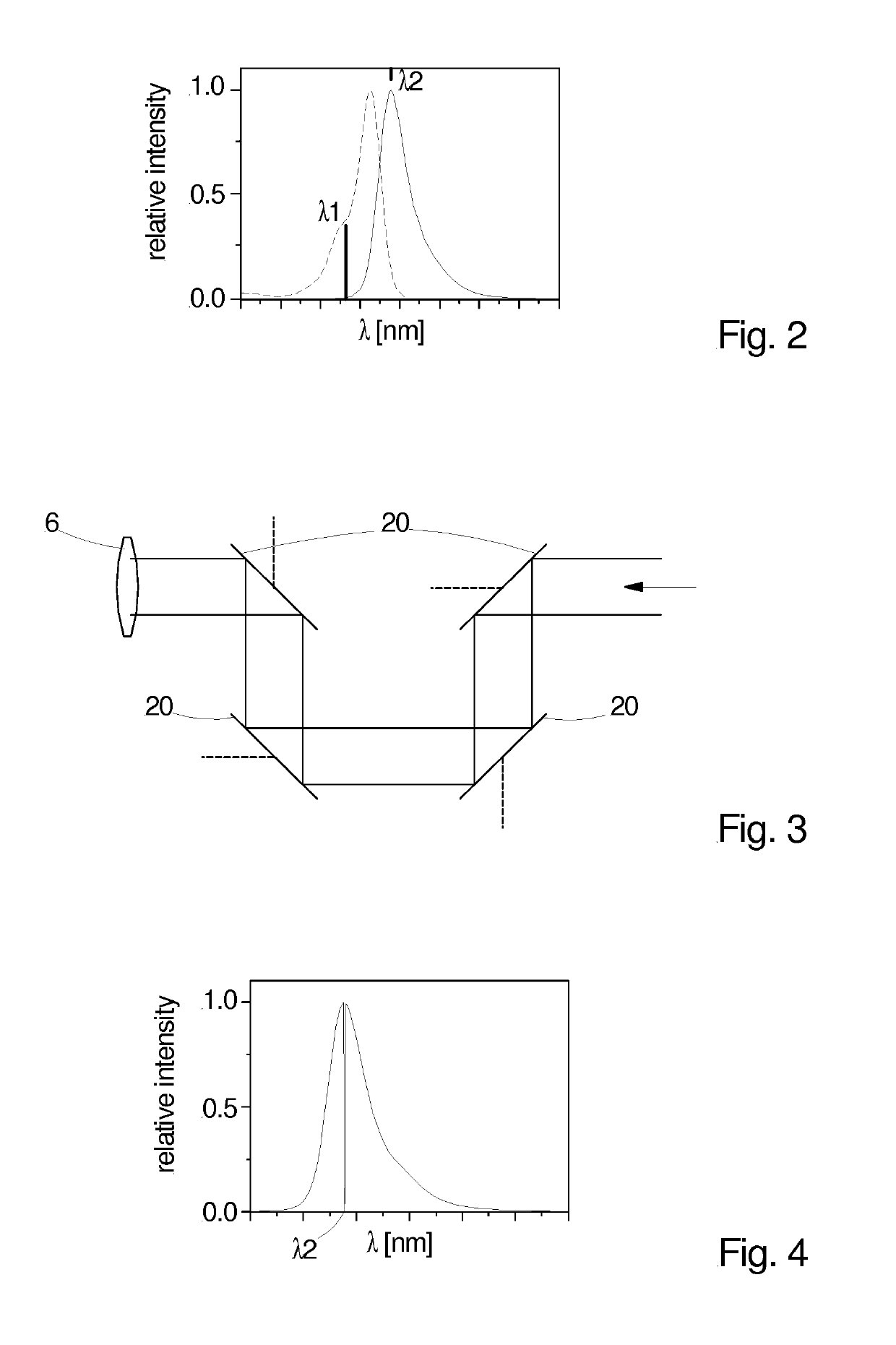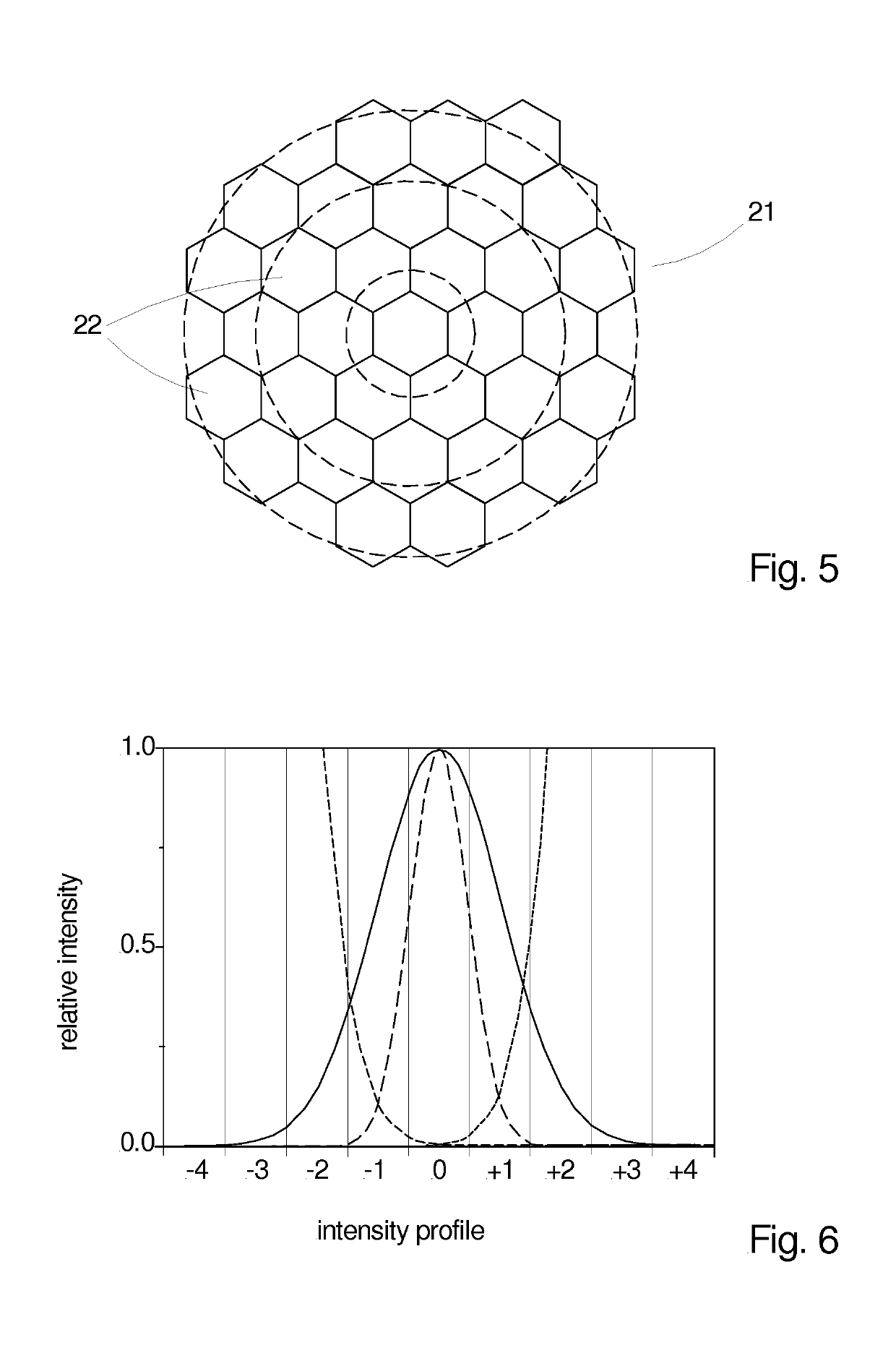Method of sted microscopy
a microscopy and optical filter technology, applied in the field of optical microscopy, can solve the problems of significant loss of luminescence signal by at least 30%, and use of regular high-performance optical filters like notch filters will not help, so as to achieve the effect of increasing resolution
- Summary
- Abstract
- Description
- Claims
- Application Information
AI Technical Summary
Benefits of technology
Problems solved by technology
Method used
Image
Examples
Embodiment Construction
[0040]FIG. 1a) shows a typical setup for STED microscopy which is very similar to that of a confocal scanning microscope. In STED microscopy a first laser beam 1 with light having a first wavelength is used to excite dye particles contained in a region 2 of a sample 3. The region can be either two- or three-dimensional, depending on the type of scanning. The sample 3 or at least the region 2 of the sample 3 is marked with the dye particles which emit luminescence, in particular fluorescence when excited. The first wavelength usually corresponds to the absorption wavelength of the dye particles used. The first laser beam 1 is coupled into the beam path by a dichroic mirror 4. Through an objective lens 5 it is directed onto the sample. Prior to entering the objective lens 5, the beam passes a scan unit which is not shown here. The scan unit has the purpose of moving the focal spot which the first laser beam 1 forms in the region 2 of the sample 3 in lateral directions and / or in axial ...
PUM
 Login to View More
Login to View More Abstract
Description
Claims
Application Information
 Login to View More
Login to View More - R&D
- Intellectual Property
- Life Sciences
- Materials
- Tech Scout
- Unparalleled Data Quality
- Higher Quality Content
- 60% Fewer Hallucinations
Browse by: Latest US Patents, China's latest patents, Technical Efficacy Thesaurus, Application Domain, Technology Topic, Popular Technical Reports.
© 2025 PatSnap. All rights reserved.Legal|Privacy policy|Modern Slavery Act Transparency Statement|Sitemap|About US| Contact US: help@patsnap.com



